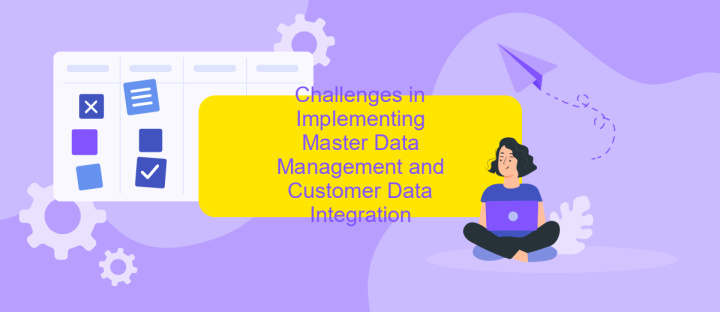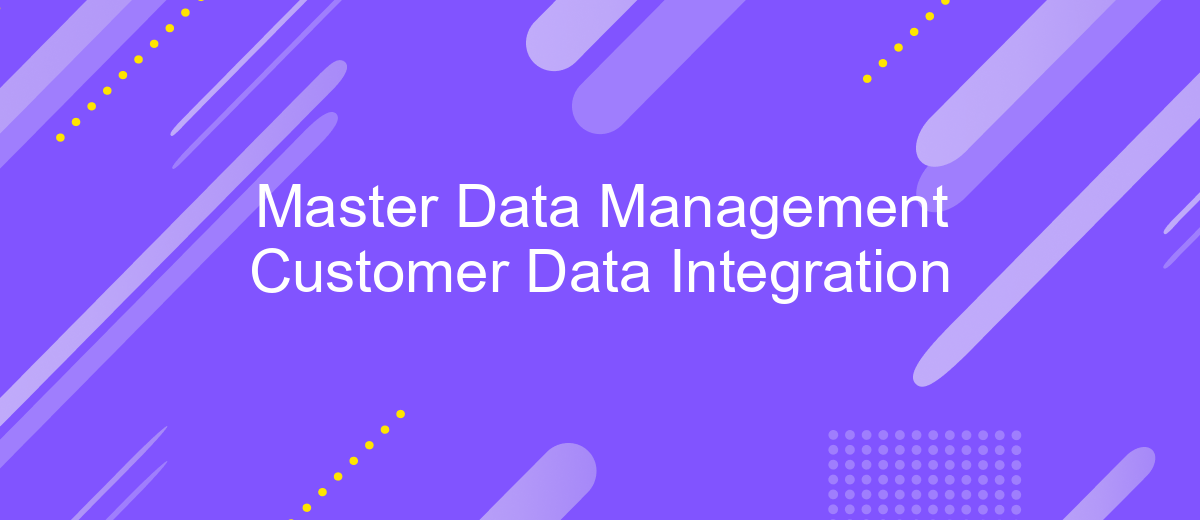Master Data Management Customer Data Integration
Master Data Management (MDM) and Customer Data Integration (CDI) are crucial strategies for businesses aiming to streamline data consistency and accuracy across various systems. By consolidating customer information into a single, reliable source, organizations can enhance decision-making, improve customer experiences, and drive operational efficiency. This article explores the key benefits and best practices for implementing MDM and CDI in your business.
Introduction to Master Data Management and Customer Data Integration
Master Data Management (MDM) and Customer Data Integration (CDI) are critical components for businesses aiming to maintain accurate and consistent data across various systems. MDM ensures that an organization’s critical data is centrally managed and shared, while CDI focuses on integrating customer data from multiple sources to create a unified view.
- Centralized Data Management
- Improved Data Quality
- Enhanced Customer Insights
- Streamlined Business Processes
By leveraging tools like ApiX-Drive, businesses can automate the integration of customer data from various platforms, ensuring seamless data consistency and accuracy. This not only enhances operational efficiency but also provides valuable insights for better decision-making. Implementing MDM and CDI strategies is essential for any organization looking to optimize its data management and improve customer relationships.
Benefits of Master Data Management and Customer Data Integration

Master Data Management (MDM) and Customer Data Integration (CDI) offer numerous benefits for businesses seeking to streamline their operations and enhance customer experiences. By consolidating disparate data sources into a single, unified view, organizations can achieve greater accuracy and consistency in their customer information. This holistic approach not only improves decision-making but also helps in maintaining data quality, thereby reducing redundancy and minimizing errors. Additionally, MDM and CDI enable companies to comply with regulatory requirements more effectively, ensuring that all customer data is properly managed and protected.
Another significant advantage of MDM and CDI is the ability to enhance customer engagement through personalized interactions. By leveraging integrated data, businesses can gain deeper insights into customer preferences, behaviors, and needs. This enables the creation of targeted marketing campaigns and personalized customer experiences. Services like ApiX-Drive can facilitate these integrations by providing seamless connectivity between various data sources and applications. With ApiX-Drive, companies can automate data synchronization processes, ensuring that customer information is always up-to-date and readily accessible across all platforms. This not only boosts operational efficiency but also fosters stronger customer relationships.
Challenges in Implementing Master Data Management and Customer Data Integration

Implementing Master Data Management (MDM) and Customer Data Integration (CDI) presents several challenges that organizations must navigate. These challenges can arise from technical, organizational, and data quality issues, which can complicate the integration process and hinder achieving a unified customer view.
- Data Silos: Different departments often store data in isolated systems, making integration difficult.
- Data Quality: Inconsistent, incomplete, or inaccurate data can undermine the effectiveness of MDM and CDI initiatives.
- Complex Integration: Integrating various data sources and formats requires sophisticated tools and expertise.
- Governance and Compliance: Ensuring data privacy and regulatory compliance adds another layer of complexity.
- Change Management: Resistance to change within the organization can impede the adoption of new systems and processes.
To address these challenges, leveraging integration platforms like ApiX-Drive can be beneficial. ApiX-Drive simplifies the integration process by providing pre-built connectors and automation tools, enabling seamless data exchange between disparate systems. This can significantly reduce the technical burden and accelerate the implementation of MDM and CDI initiatives, ensuring a more accurate and holistic view of customer data.
Best Practices for Master Data Management and Customer Data Integration

Effective Master Data Management (MDM) and Customer Data Integration (CDI) are critical for maintaining data consistency and accuracy across an organization. To achieve this, it is essential to implement a robust MDM strategy that aligns with your business needs and technological capabilities.
One of the first steps in developing an effective MDM and CDI strategy is to establish clear data governance policies. These policies should define data ownership, data quality standards, and processes for data integration. Additionally, leveraging automated integration tools like ApiX-Drive can significantly streamline the process of synchronizing customer data across multiple platforms.
- Define clear data governance policies and assign data stewards.
- Utilize automated integration tools like ApiX-Drive for seamless data synchronization.
- Regularly audit and cleanse data to maintain high data quality.
- Ensure real-time data updates to keep information current and accurate.
- Implement robust security measures to protect sensitive customer data.
By following these best practices, organizations can ensure that their MDM and CDI efforts are both effective and efficient. This not only enhances data accuracy but also improves overall business operations and customer satisfaction.
- Automate the work of an online store or landing
- Empower through integration
- Don't spend money on programmers and integrators
- Save time by automating routine tasks
Case Studies and Examples of Successful Master Data Management and Customer Data Integration Implementations
One notable example of successful Master Data Management (MDM) and Customer Data Integration (CDI) is the implementation by a leading global retailer. By centralizing customer data from various touchpoints, the company achieved a unified view of their customers. This allowed for more personalized marketing campaigns and improved customer service. The integration process leveraged advanced data matching algorithms and real-time synchronization, ensuring data accuracy and consistency across all platforms.
Another success story involves a financial services firm that utilized ApiX-Drive for seamless data integration. By automating the data flow between their CRM, marketing, and financial systems, they significantly reduced manual data entry and minimized errors. ApiX-Drive's user-friendly interface and robust API capabilities enabled quick setup and reliable data transfers, ultimately enhancing operational efficiency and customer satisfaction. These examples underscore the transformative impact of effective MDM and CDI implementations on business performance.
FAQ
What is Master Data Management (MDM) in the context of Customer Data Integration?
How does Customer Data Integration (CDI) benefit an organization?
What are the main challenges in implementing MDM for Customer Data Integration?
How can automation tools help with Customer Data Integration?
What are some best practices for successful MDM implementation in Customer Data Integration?
Do you want to achieve your goals in business, career and life faster and better? Do it with ApiX-Drive – a tool that will remove a significant part of the routine from workflows and free up additional time to achieve your goals. Test the capabilities of Apix-Drive for free – see for yourself the effectiveness of the tool.


